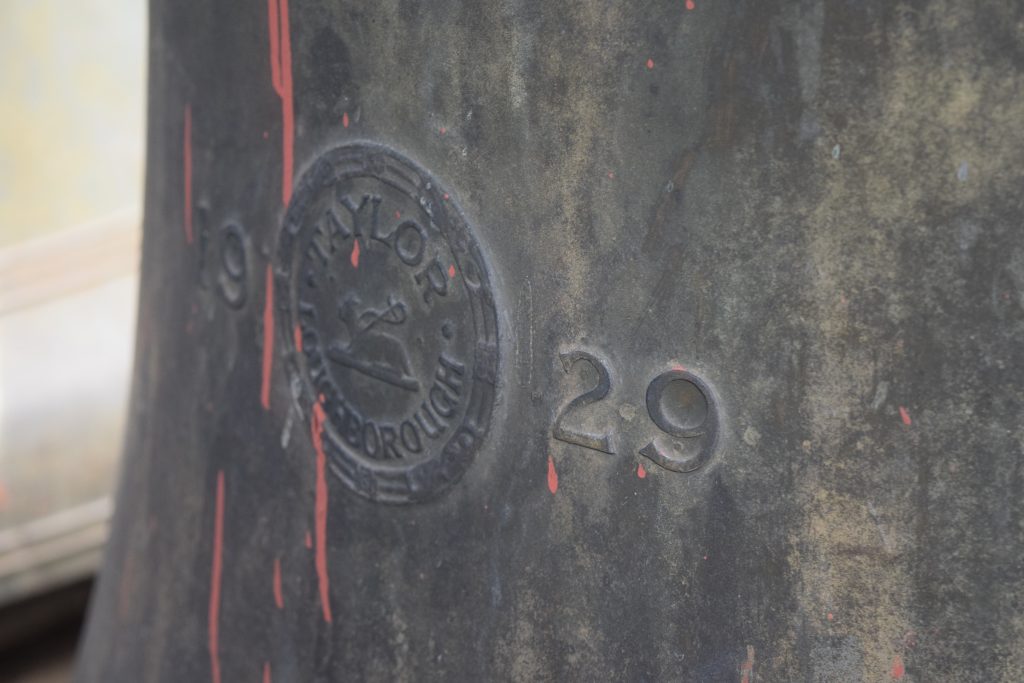
Two units within the College of Engineering have teamed up with other departments on campus to create a mobile version of an Iowa State landmark.
The departments of civil, construction, and environmental engineering (CCEE) along with mechanical engineering (ME) are working with the architecture and music departments on the Campanile Carillon Model Project. The project aims to build a one-fifth replica of ISU’s iconic 110-foot tall Campanile, which is an Italian term for a free-standing bell tower. The model will also include a 27-bell carillon, which will give it a musical range of two full octaves.

“This model will be used at various university events and outreach programs, such as graduations, alumni events, state fairs, and county fairs,” said Tin-Shi Tam, the representative from the department music and theatre. “It will also serve as a musical instrument, playing with orchestras as well as an educational tool.”
Tam, who serves as the Cownie Professor of Music and also chair of the keyboard division, is the university carillonneur which means she’s the one up in the campanile playing songs as students and others walk across central campus at the lunch hour.
“Here at Iowa State, the music you hear is actually played by a real person,” said Tam. “The bells are played from a keyboard of wooden batons and pedals. We play the carillon by striking the batons with our hands in a semi-closed position and using our feet to depress the pedals. We achieve musical expression by varying our touch.”
The music played varies from classical pieces by composers such as Johann Sebastian Bach to contemporary hits by artists like Lady Gaga. Tam also takes requests – which she plays on Fridays – and arranges pieces which she thinks will sound good with the campanile’s instrumentation.
Tam came up with the idea of a miniature, mobile campanile in the spring of 2015 and then reached out to faculty members in various departments: Jim Alleman (CCEE), Jim Heise (ME), Mikesch Museke, (architecture), and others.

“This project is an excellent example of a collaborative effort. We need skills and expertise from different disciplines to make this project work. Engineering for the structure. Architecture for the façade. Computer Science for the website. Finance for the fundraising,” Tam said. “Iowa State is blessed with so many experts and resources. This Project not only provides educational experiences for our students, it is truly a collaborative project to showcase our Cyclone spirit.”
The partnership with the ME department is especially noteworthy, since the original ten bells for the Campanile were donated by Edgar W. Stanton who graduated with a degree in ME (then called mechanic arts) with ISU’s first graduating class in 1872.
After graduating, Stanton went on to serve as head of the mathematics department, dean of the junior college, university vice president, and acting president on four different occasions. Stanton donated the original ten bells in memory of his late wife, Margaret McDonald Stanton, who served as the university’s first dean of women. The next 26 bells were funded by Stanton’s estate after his death and installed in 1929. An additional 13 bells were installed in 1956 and a fiftieth bell was added in 1967.

The bells were manufactured by John Taylor Co. of Loughborough, England. The company was a trailblazer in bell tuning technology at the turn of the twentieth century and the first scientifically-tuned bells to be exported by the company were installed in the campanile in 1899.
Current mechanical engineering students are applying their expertise to this project through ME415 Machine Systems Design, which is the senior capstone class for mechanical engineering students. Students in the class contribute to this project by reviewing the goals and requirements of the project and then engineering the systems and structures needed for safe set-up and operation. In fall 2016, students from the ME 466 Multidisciplinary Design Engineering class (an optional ME senior capstone class) contributed to the project. Patrick Keep, a student in that class who served as team leader, continues to work on the project this semester as a part of his Honors ME 490H project.

The ME students involved with this project are given the opportunity to work closely with Rick Watson of Meeks, Watson & Company of Georgetown, Ohio. Through their collaboration with Watson they have gained knowledge of carillon operation and how to engineer portable structures for the set-up and playing of concert quality carillons. An added challenge to this project is the need to have the carillon be sufficiently portable to travel throughout the country and to be safely operated outdoors or on stage. The system’s anticipated overall weight of 3500 pounds makes this a significant engineering challenge for the students. From stability in high winds to the delicate operation of each pull cable, the students have had to do numerous calculations and design analysis to insure a flawless performing concert carillon.

“The students have done a tremendous job of engineering this carillon system,” said Jim Heise, Senior Lecturer and capstone instructor for Mechanical Engineering. “They have worked closely with Dr. Tam and fully appreciate the history and opportunity they have to be a part of this historic project.”
This project is especially meaningful for Heise who is a third-generation Cyclone, a ME alumnus, and a member of the first SAE Baja off-road racing team at Iowa State in 1983.
“Having been a Cyclone as a student and now faculty, the Carillon holds a special place in my heart,” said Heise. “All Cyclones have listened to the bells play and most have even participated in campaniling. My wife and I participated in the tradition as students here as well as our daughter. It is my desire to help Dr. Tin-Shi Tam take this tradition on-the-road to wherever current or future Cyclones may be to once again enjoy the Bells of Iowa State.”